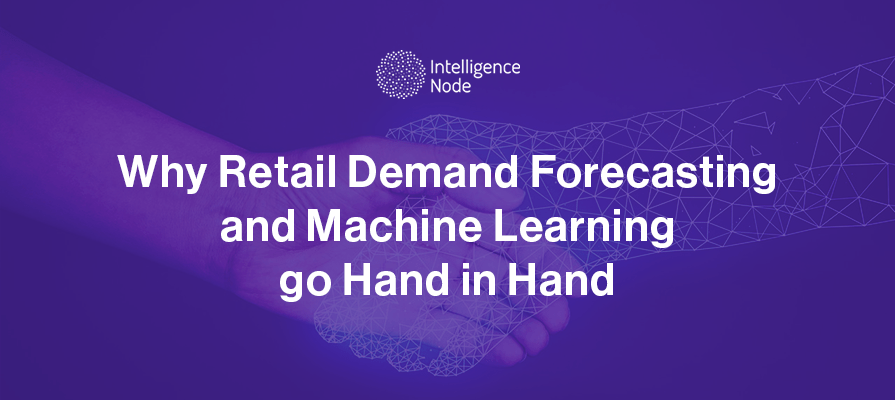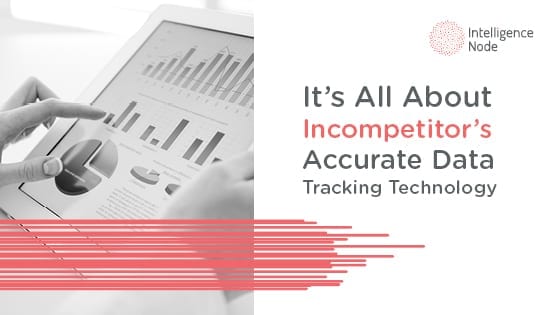The New Age of Retail & Demand Forecasting
Demand is where it all starts. Whether you want to set up a new business or expand the current one, demand dictates your decisions every step of the way. In retail demand forecasting, many factors are based on demand. For example, assessing risk, inventory planning, capital expenditure, revenue, and so on depends on the demand. Forecasting demand is especially crucial for eCommerce because of the competitive nature of business and the comparative shopper behavior. But what does that have to do with machine learning? With the progression of digital retail, the rules of the game are changing. While demand could once be easily predicted based on just a couple of parameters, it has now become much more complex with businesses going global, changing customer trends, shifting demand patterns and competitor movements, rapid market changes and more. Global brands such as Amazon, Walmart, and Google use demand prediction analytics powered by AI & ML for building strategies that are derived from vast amounts of data. And studies show that machine learning can make a world of difference.
Why Machine Learning for Retail Demand Forecasting?
McKinsey Digital states that machine learning can help businesses reduce their supply chain network errors by as much as 50%. This in turn helps prevent over 60% of revenue loss while also decreasing costs to up to 40%. Granted this can vary for different retailers, the study shares a perspective into the importance of AI-powered solutions. It can save on considerable costs and can help businesses rise above their competitors with accurate, timely data. Machine learning predicts demand based on a variety of factors that matter. Its accuracy is what makes it different from traditional demand forecasting practices where it is more about just historical data and intuition.
Identifying Hidden eCommerce Opportunities
Machine learning can help with real-time competitor price monitoring and product assortment by analyzing current and historic data. It uses algorithms for forecasting demand by drawing insights from vast amounts of data and uses both unstructured and structured data to do so. The internal data sources can include websites, reviews, inventory, transactions, sales data, marketing campaigns, and so on. The external data sources include receipts, social media, market trends, third-party data, and so on. Both are equally important in forecasting demand and so the quality of both makes a difference to the accuracy of the algorithms.
Due to the complexity of today’s businesses, as discussed earlier in this blog post, leveraging machine learning for demand forecasting is not a luxury but a necessity now. If your business wants to thrive in the age of Amazon and win the highly competitive and concentrated eCommerce market, then you must have accurate and trustworthy data on market trends, demand patterns, competitor movements, demand and price history, and so on. Machine learning is valuable because it quickly adapts to new data that is fed to it and alters insights accordingly. Its ability to retrain itself and learn continuously enables better forecasting over time. This allows for informed, data-driven decisions that lead to better management of assortments and inventory, identifying gaps left by your competitors, and generating higher returns.
Optimizing Assortments & Inventory Based on Demand
What can demand forecasting help you with? The opportunities are endless. It helps organizations plan for the right inventory levels and avoid over stocking or stock outs. It helps you reallocate inventory where it’s running low and optimize the depth of inventory by evaluating multiple parameters. From assortment optimization to product availability, machine learning powered demand forecasting ensures you maintain the right levels of the right products at the right time, so your consumer doesn’t leave you for your competitor. Demand forecasting ensures there is no wastage of resources and that you are not losing money on over stocking products that are not in demand or under stocking products that could eventually lead to stock outs and lost customers. It helps you set accurate goals and achieve them. By leveraging machine learning for demand forecasting, you are preparing your business for the future.

Preparing for a Digitally Driven Future of Retail
To cater to today’s highly informed customer, decisions based on mere intuition won’t make the cut. Your competitors are arming themselves with the right retail technologies to thrive in the new-age eCommerce and you need to as well! Demand forecasting is one such technology that should become an integral part of every eCommerce and omni-channel retail business to become future-ready, meet customer demand, and increase sell-throughs and profits. Using an AI-powered tool like Intelligence Node’s plug & play Assortment Intelligence solution, empowers you to beat your competitors and win the online shopper. From monitoring price sensitivities and product visibility, to curating the best product assortment and ensuring product availability, you can truly have it all when you use AI and ML in retail.

Predictive analytics provides better and more valuable insights that would otherwise go unnoticed. With the amount of data that goes into it, software used to predict future outcomes helps you make the best decisions regarding your business. The more the data that goes into it, the better the chances of it giving accurate results. You can experience these advantages only when you use an AI-powered solution that can help predict with utmost precision taking many key factors into account. Solutions such as those by Intelligence Node give you the option to explore the highest growth opportunities.




